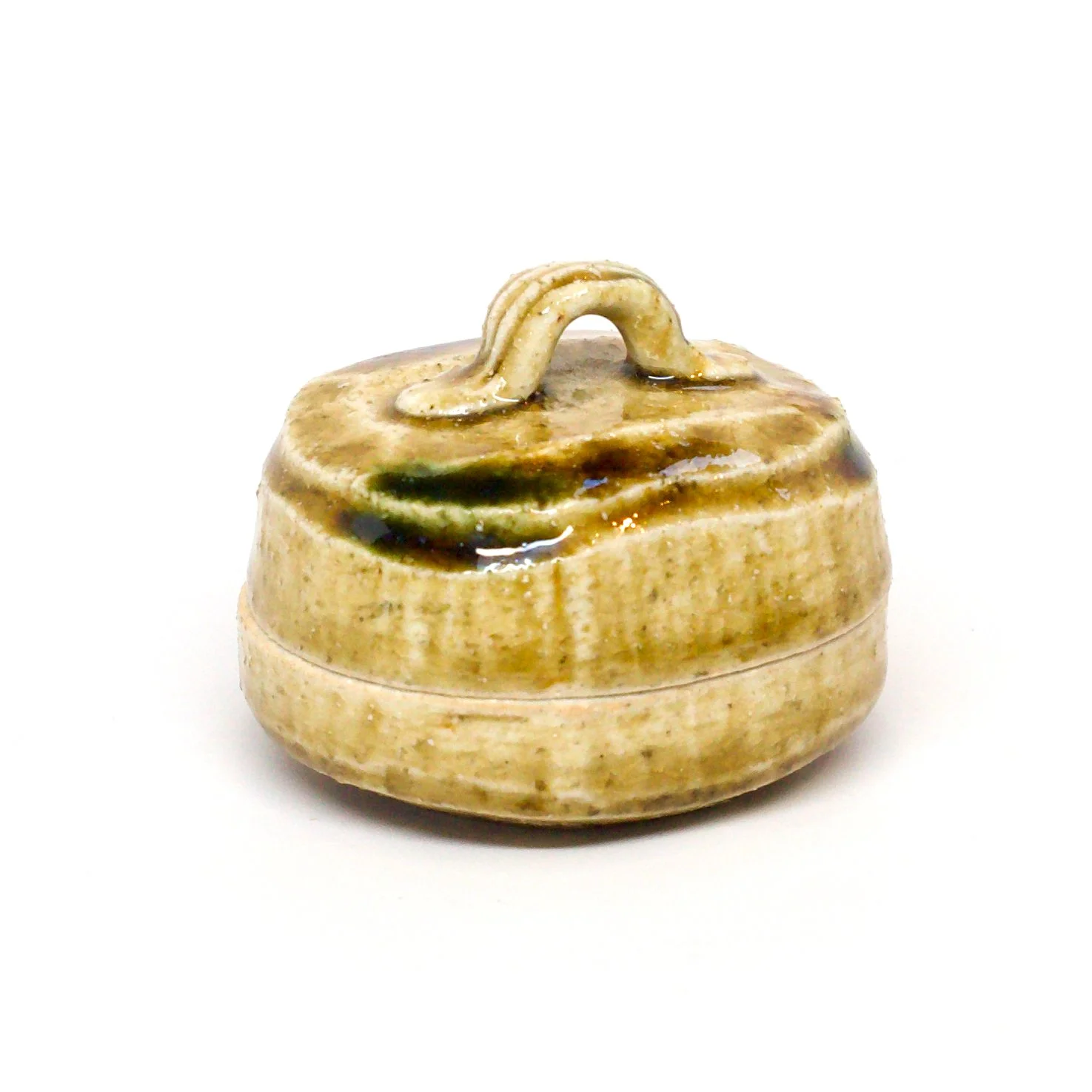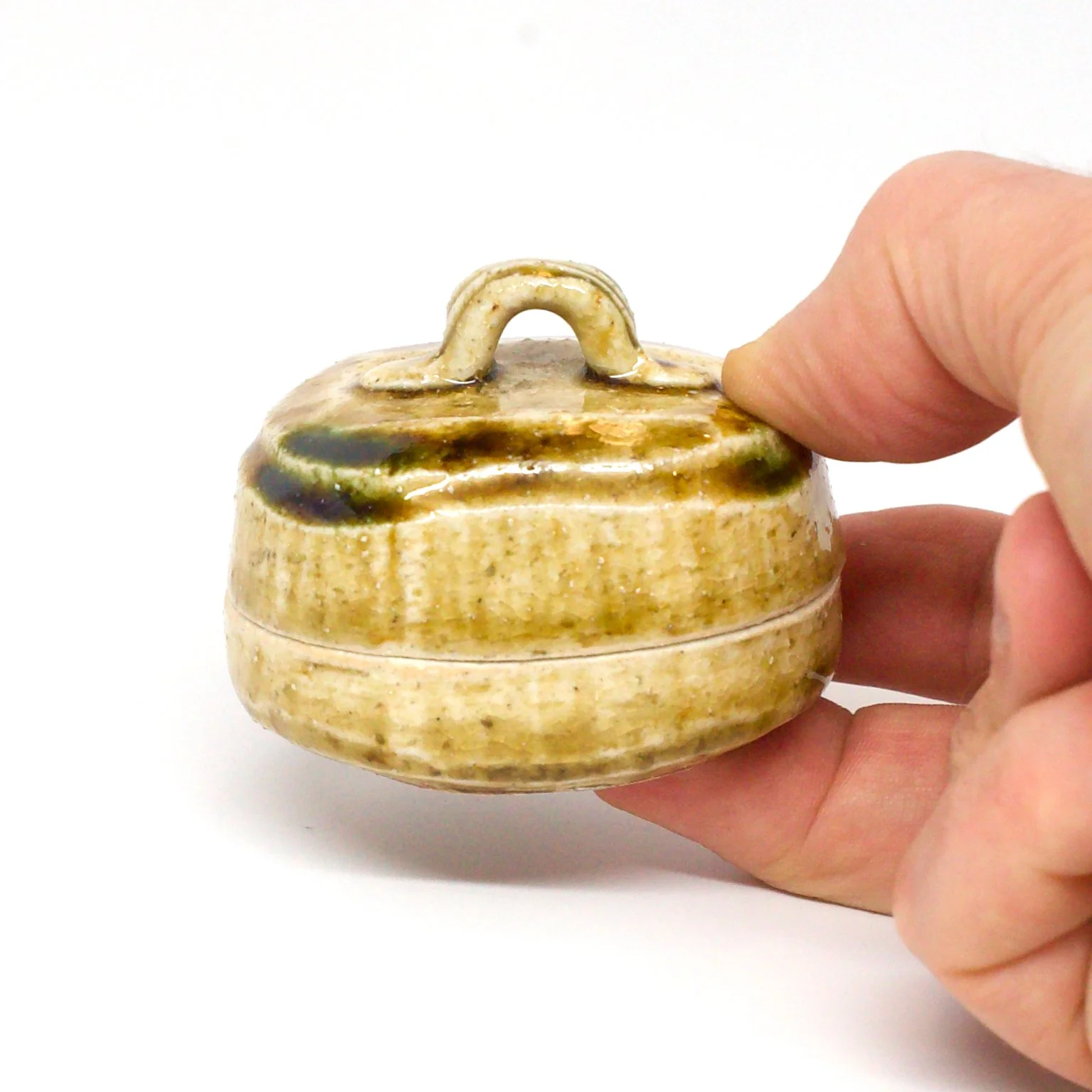Jotetsu YAMAGUCHI II (1920 - 99)
Ki-seto kogo incense box.
Akazu, Seto; c. 1980’s. 2 3/8” long by 2 1/8” wide by 2” tall
$110 (CAD)
Like most of Yamaguchi Jotetsu’s ceramics, this incense box is made from the very fine, near-white clay found at the base of Mt Sanage in Akazu outside of Seto City. Yamaguchi came from a multi-generation pottery family who still make Mino wares in Akazu. Known more for their Shino and Oribe, the Yamaguchi also made very fine examples of Ki-seto.
An application of a simple ash glaze gives the distinct eponymous yellow-gold colour of Ki-seto, and the ash glaze pools and thickens nicely on this kogo's carved edges and scored handle. But the splashes of green copper on the corners - known as tanpan - are another distinctive hallmark of Ki-seto. Robert Yellin has identified tanpan as one of the “landscapes,” or keshiki, of Japanese ceramics - numerous kiln effects that give a piece its organic character.
Yellin also notes that tanpan should never appear applied but almost as though it’s occurred naturally. The green splashes on this kogo dissolve beautifully on its corners, emerging softly out of the pooling yellow-gold ash glaze.
Comes with the signed, stamped, and titled wood box, and stamped wrapping cloth.



